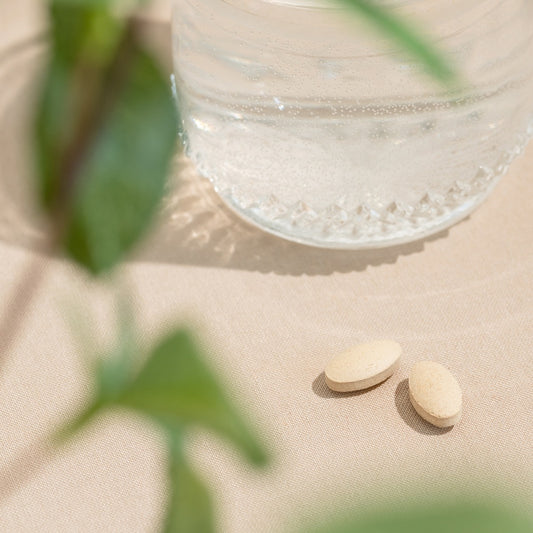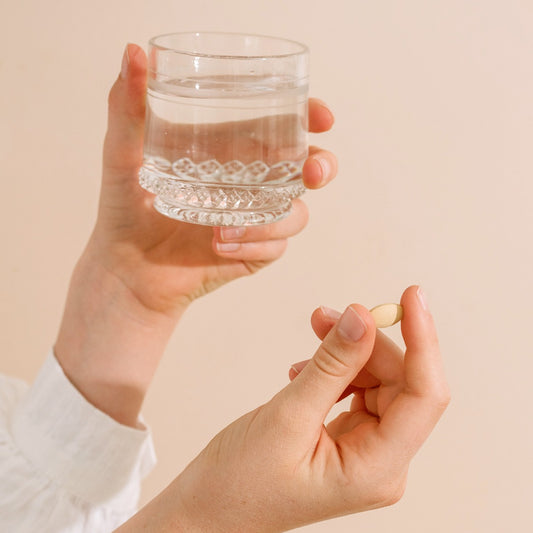Managing a Vata Constitution
The Qualities of Vata
“Tatra ruksho laghu sheetah, khara sukshmaschalo nilah”
The qualities of Vata are dry, light, cool, rough, subtle, and mobile.— Ashtanga Hrdayam: Sutrasthana I:11
This Sanskrit line lists the main qualities of vata and provides a key to understanding what it means to have a predominantly vata constitution (prakriti). The main qualities of vata are dry, light, cool, rough, subtle, and mobile. So, having a vata-predominant prakriti means that these qualities express themselves generously throughout your mental, emotional, and physical make up.
As you become familiar with the doshas, you can get a feel for how these qualities manifest. A vata-predominant individual's strengths and weaknesses both reflect these qualities.
- In excess, the dry and rough qualities may manifest themselves as dry or brittle skin, lips, hair, nails, or bones, as feeling “dry” emotionally, or having a dry sense of humor.
- The “light” quality may give you a lanky physique but excess lightness may manifest as being underweight, having insufficient muscle mass, light bones, difficulty sleeping, or feeling “spacey” or insecure.
- The cold quality of vata may lead you to feel cold more easily than others around you, experience cold hands and feet, and crave a feeling of warmth.
- The subtle quality may express itself as being sensitive, highly intuitive, introverted, creative, and having an active fantasy life.
- The mobile quality may lead to a healthy ability to “multi-task” or, in excess, to scattered attention, a fidgety tendency, restlessness, and nervousness. It may also manifest as extremes: as in being very tall or very short or being drastically different weights at different times in your life.
Decreasing or Balancing Vata
Like Increases Like
A basic tenet of Ayurveda is “like increases like.” Therefore, increasing the inherent qualities of vata will increase vata in your body, mind, and spirit.
For example, because vata is inherently cool—cool weather, cool foods, the cool seasons and times of day, and even cool emotions can increase vata. Likewise, dry seasons, foods, environments, or emotions will increase the dry quality and thereby increase vata.
Example: You are a vata individual. One of the qualities of vata is dryness. You live in a dry climate, like a desert, and you regularly snack on dry crackers. This added dryness adds to the dry quality of vata, which you already have plenty of. This causes vata to increase and can lead to dry conditions like brittle nails or dry skin.
Tastes That Increase and Decrease Vata
Along with the main qualities of vata, it is also helpful to know those tastes that increase and decrease vata.
- Pungent, bitter, and astringent tastes increase vata by increasing its drying and cooling qualities. An example of the pungent taste is chili peppers. Bitter and astringent tastes are common in most leafy greens and many herbs.
- The sweet, sour, and salty tastes decrease vata by bringing moisture, bulk, and warmth to the body, which are opposite qualities to those of vata. An example of a naturally sweet taste is wheat; of sour: pickles; of salty: seaweed.
Using Opposites to Maintain Balance
Each of us has a unique proportion of the three doshas in our prakritis. Ayurveda teaches us that if a dosha increases beyond its original, natural proportion for our unique constitution, it fosters an environment where imbalance can flourish.
It is common for our predominant dosha (vata, pitta, or kapha) to increase more quickly than other doshas because we tend to perpetuate what we know best.
For example, if your dominant dosha is vata, you will naturally incline towards a life filled with activity, due to the mobile quality of vata. However, if you are too active, you are likely to eventually aggravate vata and thereby exhaust the nervous system.
To do this, we want to incorporate things that decrease the excess dosha by providing the opposite qualities. For example, if vata has increased due to excess activity, a quiet, calm environment can be a the perfect solution. If it has increased due to excess dryness, wetness provides the needed balance. Too much cold? Use heat.
One of the wonderfully practical aspects of Ayurveda is that anything can be used to restore healthy balance because everything that exists has a quality. This includes but is not limited to: herbs, foods, colors, drinks, environments, smells, and lifestyles.
Qualities opposite to vata are moist, grounding, warming, smooth, oily, and stabilizing. It is therefore best for vata individuals to seek out physical and emotional environments, routines, and foods that possess these opposite qualities.
Using Diet to Balance Vata
A vata individual does wonderfully with warm, freshly cooked, nourishing, mushy foods, like soups, stews, kitchari, and one-pot-meals.
Because of the inherent “light” quality in vata, you may think that heavy foods would nicely balance that quality, but actually too much heavy food—or just too much food at a sitting—is too heavy for the lightness of the vata digestive system.
Because the sweet, sour, and salty tastes decrease vata, these tastes should be predominant in your diet.
When selecting sweet foods, note that naturally sweet foods like many grains, squashes, and most fruits are appropriate, but processed foods high in refined sugars are not at all balancing for vata.
Refined sugars merely offer a quick burst of energy, followed by a “crash,” a pattern that is already a hallmark feature of vata, and one that the vata individual does well to avoid.
Herbal Support to Balance Vata
Using Ayurvedic herbs to manage your constitution compliments the changes you make in your diet and lifestyle and can be incredibly supportive in promoting overall health.
Ashwagandha, shatavari and vidari Kanda are three of the primary herbs used to remove excess vata from the body and maintain balance. All of these herbs can be found in our Healthy Vata herbal tablets.
Climate and Lifestyle to Balance Vata
The ideal environment for a vata individual is warm and wet, like Hawaii. Sweet scents, sweet music, sweet experiences, and sweet emotions are also wonderful for vata.
A daily, 10–20 minute gentle self-massage with warm sesame oil or Vata Massage Oil can positively change the life of a vata type.
The mobile quality of vata can drive vata types to do a thousand things at one time. This can lead to exhaustion of the nervous system, which in turn causes emotional and physical restlessness and eventual “dis-ease.”
While a daily routine can feel contrary to your nature, it can be extremely beneficial for you to incorporate into your life.
For example, vata is balanced by rising and going to bed at about the same time every day, as well as taking time for meditation, gentle yoga, or other strengthening exercise that is easy on the joints. Also try having regular meals, chewing your food thoroughly, and taking a breath before moving on to your next activity.
Yoga for Vata Types
The practice of yoga goes hand in hand with Ayurveda. Visit this guide to vata-pacifying yoga for information on how to customize your yoga practice to help calm the mind, settle the nervous system, and balance excess vata.
Famous Vata Examples
Christy Turlington. Lanky. Moves around a lot. Very tall. Angular face.
Mick Jagger. Jumps around. Creative. Lanky. Disproportionate features.
Now What?
Knowing our prakriti is useful because it increases awareness of our natural strengths and challenges. It helps us understand and embrace our unique nature and provides a positive first step towards understanding our health.
The second step is to understand if and how we have strayed from our natural, healthy constitution. In Ayurveda, we determine this by comparing our prakriti (natural constitution) with our vikriti (current condition). If you have not already, take the dosha quiz to determine your current state of balance and get started on your path to optimal well-being.
COPYRIGHT
The above information was written by Dr. Claudia Welch for the exclusive use of Banyan Botanicals. The information is protected by copyright and may not be reprinted without the written permission of Dr. Claudia Welch and Banyan Botanicals.
DISCLAIMER
The above prakriti test and results are intended as a convenient tool to provide practical information on your Ayurvedic constitutional type. It is not intended to diagnose, treat, cure or prevent any disease. In addition, it should be noted that while this information should be considered highly useful it is not meant to replace the skilled constitutional analysis of a professionally trained Ayurvedic Physician.
More for You
Vata-Balancing Diet
Vata is balanced by a diet of freshly cooked, whole foods that are soft or mushy in texture, rich in protein and fat, seasoned with a variety of warming spices, and served warm or hot.
Vata-Balancing Foods
Vata is cool, dry, rough and light, so eating foods that neutralize these qualities—foods that are warm, moist, oily, smooth, and nourishing—can help to balance excess vata.














